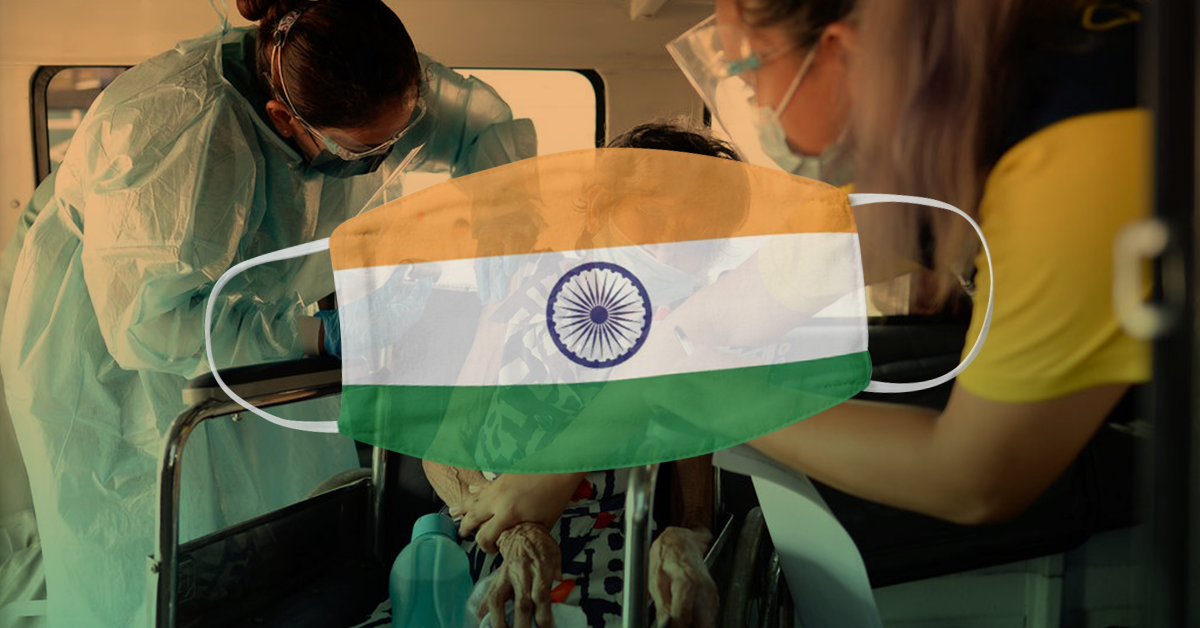May 15, 2021
by Marriane Solante
India is currently fighting the second wave of COVID-19 that started mid-March. It is the world’s worst outbreak with 400,000 cases per day. In mid-May, 23 million people were infected with the virus and 250,000 were dead. The virus hit the main cities of New Delhi and Mumbai hard along with the neighboring places without doctors or hospitals, leaving the people with no access to healthcare. Ramanan Laxminarayan, director of the Center for Disease Dynamics, Economics and Policy in New Delhi said that there were no oxygens, hospital beds were scarce, and getting a test was close to impossible.
Many believe that the Indian variant, B.1.167 is responsible for the severe damage the second wave caused. It has been dubbed as the “double mutant” as it carries two mutations, E484Q and L425R. The World Health Organization (WHO) said that the virus is a variant of concern and suggested that it has an increased rate of transmission. However, the study has not yet been peer-reviewed and limited. 10% of India’s cases are found to be infected with this Indian variant.
INDIAN VARIANT IN PH
B.1.167 has been detected in the Philippines according to DOH. The first two cases were male OFWs from UAE and Oman with no history of travel to India. The passengers in the same flight as the patients have tested negative. Both patients are now asymptomatic. A couple of days later, DOH detected 10 more cases infected with the variant. 9 carriers were seafarers of MV Athens Bridge. The ship had a two-day port stop in India. One was from Belgium and flew to Manila via the UAE.
Presidential spokesperson Harry Roque reported that there is no local transmission of the Indian variant yet.
The government has extended travel restrictions on travelers from India to avoid more infections in the country. Coverage of the travel ban covers Bangladesh, Pakistan, Nepal, and Sri Lanka from entering the Philippines. OFWs from India are required to follow strict health protocol.
DAVAO CITY SEMI-LOCKDOWN
On Monday, April 26, Mayor Sara Duterte approved the Regional IATF proposal of tightening the borders of the Davao Region as Covid-19 cases rose once more. The semi-closing of the regional borders was based on the recommendation of DOH Davao Region for stricter measures in checkpoints. With new variants recently discovered in Mindanao, this semi-closure is what they proposed as limiting travelers will help in the slower spread of the virus.
To clarify any confusion amongst the people, Mayor Sara announced that there is no region-wide border control or lockdown being implemented.
All travelers inbound will present a negative RT-PCR test within 72 hours. Non-essential travels are barred from checkpoints and only emergency, medical or other humanitarian reasons are allowed. Authorized Persons Outside of Residence (APOR) are allowed as long as it is health and emergency services, officials on official travels, humanitarian assistance actors for transporting medical supplies related to Covid-19, for work or business, and public utility vehicles. Returning residents must present ID and negative RT-PCR results. Resident overseas Filipino (ROF) may be fetched by the LGU of destination or they may also opt-out for private vehicles and no other person shall accompany the ROF. As for non-residents, they must provide proof of their purpose (medical and essential goods). Tourists are allowed to enter once they present the negative RT-PCR test and resort booking confirmation.
This executive order has taken effect as of May 14, 2021.

